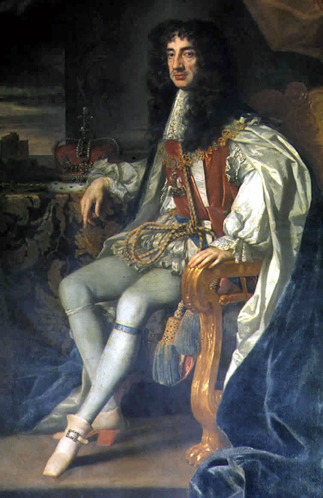
Charles II of England

Charles II of England: ca. 1675
Charles II (May 29, 1630 - February 6, 1685) was Monarch of the Three Kingdoms of England, Scotland, and Ireland.
Charles II's father, King Charles I was executed at Whitehall on 30 January 1649, at the climax of the English Civil War. Although the Parliament of Scotland proclaimed Charles II King of Great Britain and Ireland in Edinburgh on February 6, 1649, the English Parliament instead passed a statute that made any such proclamation in England and Ireland unlawful. England entered the period known as the English Interregnum or the English Commonwealth, and the country was a de facto republic, led by Oliver Cromwell. Cromwell defeated Charles at the Battle of Worcester on September 3, 1651, and Charles fled to mainland Europe. Cromwell became virtual dictator of England, Scotland and Ireland. Charles spent the next nine years in exile in France, the United Provinces and the Spanish Netherlands.
A political crisis that followed the death of Cromwell in 1658 resulted in the restoration of the monarchy, and Charles was invited to return to Britain. On May 29, 1660, his 30th birthday, he was received in London to public acclaim. After 1660, all legal documents were dated as if Charles had succeeded his father as king in 1649.
.jpg)
The Arrival of King Charles II of England in Rotterdam,
May 24, 1660 by Lieve Pietersz Verschuier: 1665
(Enroute to London and the Resoration of the Monarchy)
Charles's English parliament enacted laws known as the Clarendon Code, designed to shore up the position of the re-established Church of England. Charles acquiesced to the Clarendon Code even though he himself favored a policy of religious tolerance. The major foreign policy issue of Charles's early reign was the Second Anglo-Dutch War. In 1670, Charles entered into the Secret Treaty of Dover, an alliance with his first cousin King Louis XIV of France. Louis agreed to aid Charles in the Third Anglo-Dutch War and pay Charles a pension, and Charles secretly promised to convert to Roman Catholicism at an unspecified future date. Charles attempted to introduce religious freedom for Catholics and Protestant dissenters with his 1672 Royal Declaration of Indulgence, but the English Parliament forced him to withdraw it. In 1679, Titus Oates's revelations of a supposed "Popish Plot" sparked the Exclusion Crisis when it was revealed that Charles's brother and heir (James, Duke of York) was a Roman Catholic. The crisis saw the birth of the pro-exclusion Whig and anti-exclusion Tory parties. Charles sided with the Tories, and, following the discovery of the Rye House Plot to murder Charles and James in 1683, some Whig leaders were killed or forced into exile. Charles dissolved the English Parliament in 1681, and ruled alone until his death on February 6, 1685. He was received into the Roman Catholic Church on his deathbed.
Charles was popularly known as the Merrie Monarch, in reference to both the liveliness and hedonism of his court and the general relief at the return to normality after over a decade of rule by Oliver Cromwell and the Puritans. Charles's wife, Catherine of Braganza, bore no children, but Charles acknowledged at least 12 illegitimate children by various mistresses. As illegitimate children were excluded from the succession, he was succeeded by his brother James.
Early Life
Charles was born in Saint James's Palace on May 29, 1630. His parents were King Charles I, who ruled the three kingdoms of England, Scotland and Ireland, and Queen Henrietta Maria, the sister of King Louis XIII of France. Charles was their second son and child. Their first son, who was born about a year before Charles, had died aged less than a day. England, Scotland and Ireland were Christian countries, but worship was divided between different denominations such as Catholicism, Anglicanism, Presbyterianism, and Puritanism. Charles was baptized in the Chapel Royal on June 27th by the Anglican Bishop of London William Laud and brought up in the care of the Protestant Countess of Dorset, though his godparents included his mother's Catholic relations, Louis XIII and Marie de' Medici. At birth, Charles automatically became Duke of Cornwall and Duke of Rothesay, along with several other associated titles. At or around his eighth birthday, he was designated Prince of Wales, though he was never formally invested with the Honors of the Principality of Wales.
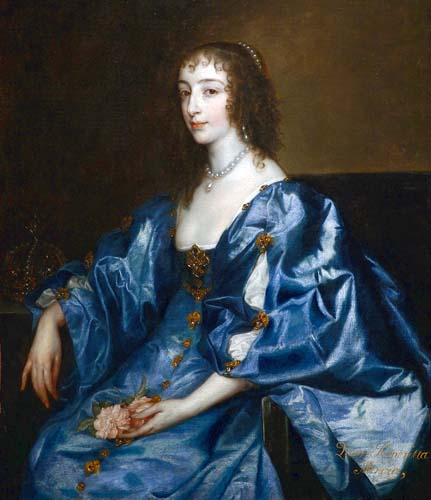
Henrietta Maria of France
(Mother of Charles II)
During the 1640's, when Charles was still young, his father fought Parliamentary and Puritan forces in the English Civil War. Charles accompanied his father during the Battle of Edgehill and, at the age of fourteen, participated in the campaigns of 1645, when he was made titular commander of the English forces in the West Country. By Spring 1646, his father was losing the war, and Charles left England due to fears for his safety, going first to the Isles of Scilly, then to Jersey, and finally to France, where his mother was already living in exile and his first cousin, eight-year-old Louis XIV, was king.

Charles II as an Infant
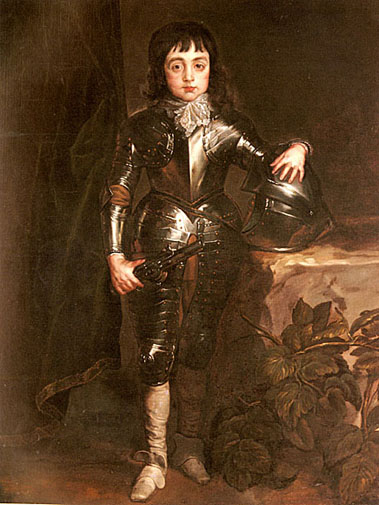
Portrait of Charles II - When Prince of Wales
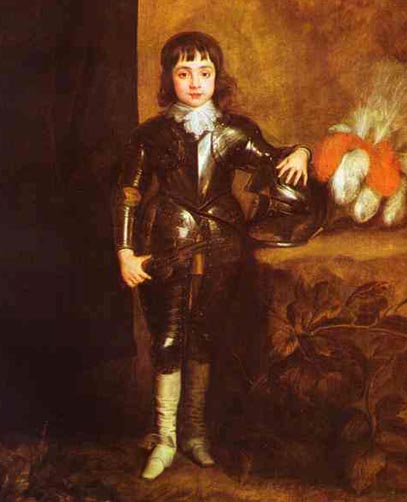
Charles II
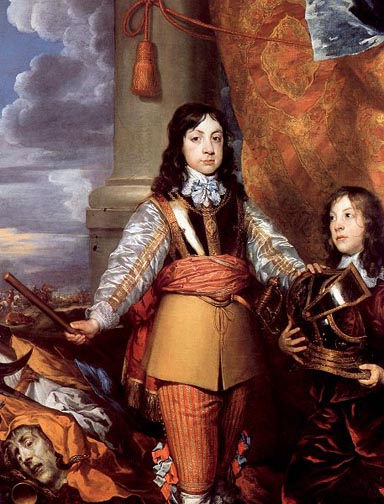
Charles II when Prince of Wales by William Dobson, 1642
.jpg)
Coat of Arms of the Stuart Princes of Wales (1610-1688)
In 1648, during the Second English Civil War, Charles moved to The Hague, where his sister Mary and his brother-in-law William II, Prince of Orange, seemed more likely to provide substantial aid to the royalist cause than the Queen's French relations. However, the royalist fleet that came under Charles's control was not used to any advantage, and did not reach Scotland in time to join up with the royalist Engagers army of the Duke of Hamilton, before it was defeated at the Battle of Preston by the Parliamentarians.
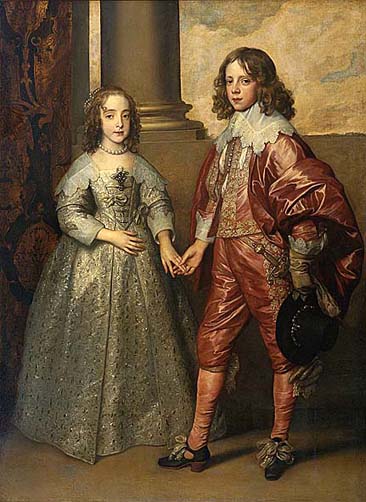
William II Prince of Orange and Princess Henrietta Mary Stuart
daughter of Charles I of England 1641
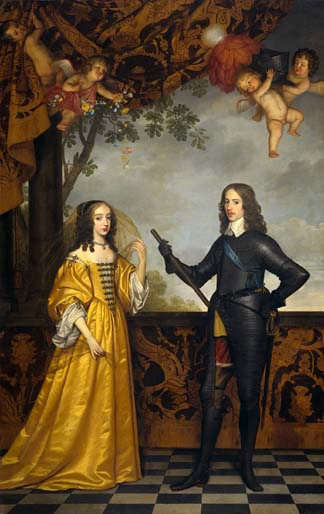
Willem II Prince of Orange and Maria Stuart
At The Hague, Charles had a brief affair with Lucy Walter, who later falsely claimed that they had secretly married. Her son, James Crofts (afterwards Duke of Monmouth and Duke of Buccleuch), was one of Charles's many acknowledged illegitimate children who became prominent in British political life and society.
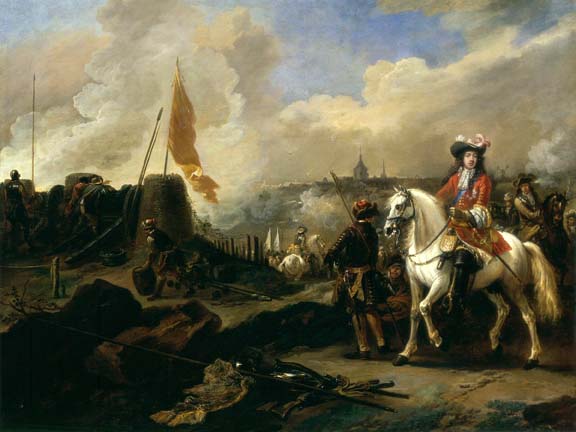
James Scott, Duke of Monmouth and Buccleuch by Jan van Wyck
Charles I was captured in 1647. He escaped and was recaptured in 1648. Despite his son's diplomatic efforts to save him, Charles I was beheaded in 1649, and England became a republic. On February 6th, the Covenanter Parliament of Scotland proclaimed Charles II as King of Great Britain in succession to his father, but refused to allow him to enter Scotland unless he accepted Presbyterianism throughout the British Isles. When negotiations stalled, Charles authorized General Montrose to land in the Orkney Islands with a small army to threaten the Scots with invasion, in the hope of forcing an agreement more to his liking. Montrose feared that Charles would accept a compromise, and so chose to invade mainland Scotland anyway. He was captured and executed. Charles reluctantly promised that he would abide by the terms of a treaty agreed between him and the Scots Parliament at Breda, and support the Solemn League and Covenant, which authorized Presbyterian church governance across Britain. Upon his arrival in Scotland on June 23, 1650, Charles formally agreed to the Covenant; his abandonment of Episcopal Church Governance, although winning him support in Scotland, left him unpopular in England. Charles himself soon came to despise the "villainy" and "hypocrisy" of the Covenanters.
_ca_1653.jpg)
A king in exile: Charles II painted by Philippe de Champaigne, ca. 1653
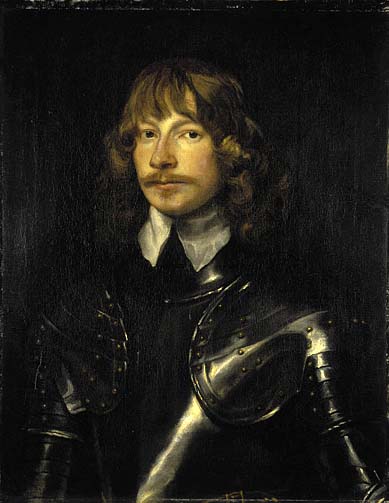
1st Marquess of Montrose
On September 3, 1650, the Covenanters were defeated at the Battle of Dunbar by a much smaller force led by Oliver Cromwell. The Scots forces were divided into royalist Engagers and Presbyterian Covenanters, who even fought each other. Disillusioned by the Covenanters, in October Charles attempted to escape from them and rode north to join with an Engager force, an event which became known as "the Start", but within two days the Presbyterians had caught up with and recovered him. Nevertheless, the Scots remained Charles's best hope of restoration, and he was crowned King of Scotland at Scone on January 1, 1651. With Cromwell's forces threatening Charles's position in Scotland, it was decided to mount an attack on England. With many of the Scots (including Lord Argyll and other leading Covenanters) refusing to participate, and with few English royalists joining the force as it moved south into England, the invasion ended in defeat at the Battle of Worcester on September 3, 1651, after which Charles eluded capture by hiding in the Royal Oak at Boscobel House. Through six weeks of narrow escapes Charles managed to flee England in disguise, landing in Normandy on October 16th, despite a reward of £1,000 on his head, risk of death for anyone caught helping him and the difficulty in disguising Charles, who was unusually tall at over 6 feet high.
Cromwell was appointed Lord Protector of England, Scotland and Ireland, effectively placing the British Isles under military rule. Impoverished, Charles could not obtain sufficient support to mount a serious challenge to Cromwell's government. Despite the Stuart family connections through Henrietta Maria and the Princess of Orange, France and the Dutch Republic allied themselves with Cromwell's government from 1654, forcing Charles to turn for aid to Spain, which at that time ruled the Southern Netherlands. With Spanish money Charles raised a small army from his exiled subjects; it consisted of five infantry regiments plus a few troops of cavalry. This force formed the nucleus of the post-Restoration British Army.
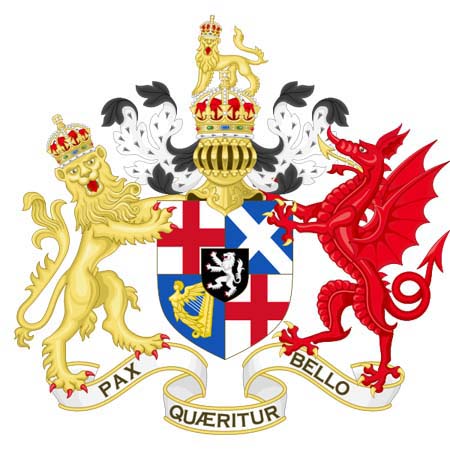
Coats of Arms - Lord Protector

Lord Protector
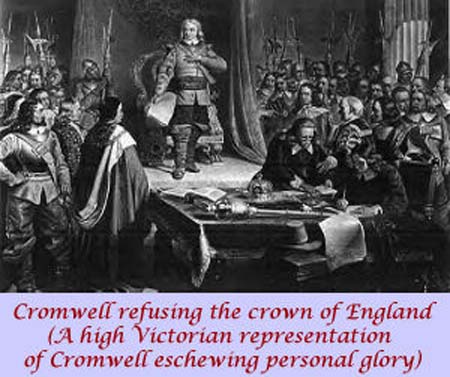
Cromwell Refusing the Crown
Restoration
After the death of Cromwell in 1658, Charles's chances of regaining the Crown at first seemed slim as Cromwell was succeeded as Lord Protector by his son, Richard. However, the new Lord Protector, with no power base in either Parliament or the New Model Army, was forced to abdicate in 1659 and the Protectorate was abolished. During the civil and military unrest which followed, George Monck, the Governor of Scotland, was concerned that the nation would descend into anarchy. Monck and his army marched into the City of London and forced the Rump Parliament to re-admit members of the Long Parliament excluded in December 1648 during Pride's Purge. The Long Parliament dissolved itself and for the first time in almost 20 years, there was a general election. The outgoing Parliament designed the electoral qualifications so as to ensure, as they thought, the return of a Presbyterian majority.
The restrictions against royalist candidates and voters were widely ignored, and the elections resulted in a House of Commons which was fairly evenly divided on political grounds between Royalists and Parliamentarians and on religious grounds between Anglicans and Presbyterians. The new so-called Convention Parliament assembled on April 25, 1660, and soon afterwards received news of the Declaration of Breda, in which Charles agreed, among other things, to pardon many of his father's enemies. The English Parliament resolved to proclaim Charles King and invite him to return, a message that reached Charles at Breda on May 8, 1660. In Ireland, a convention had been called earlier in the year, and on May 14th it declared for Charles as King.
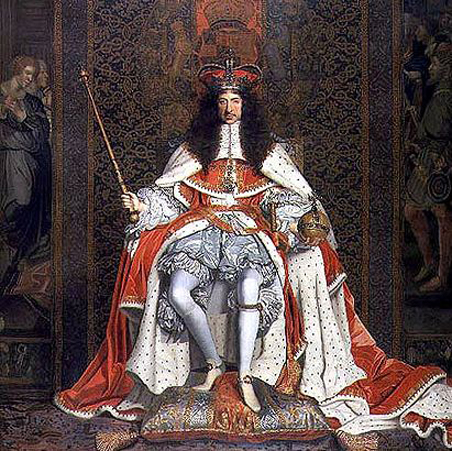
Charles II of England in Coronation Robes
Charles set out for England, arrived in Dover on 25 May 1660 and reached London on 29 May, his 30th birthday. Although Charles and Parliament granted amnesty to Cromwell's supporters in the Act of Indemnity and Oblivion, 50 people were specifically excluded. In the end nine of the regicides were executed: they were hanged, drawn and quartered; others were given life imprisonment or simply excluded from office for life. The bodies of Oliver Cromwell, Henry Ireton and John Bradshaw were subjected to the indignity of posthumous decapitations.
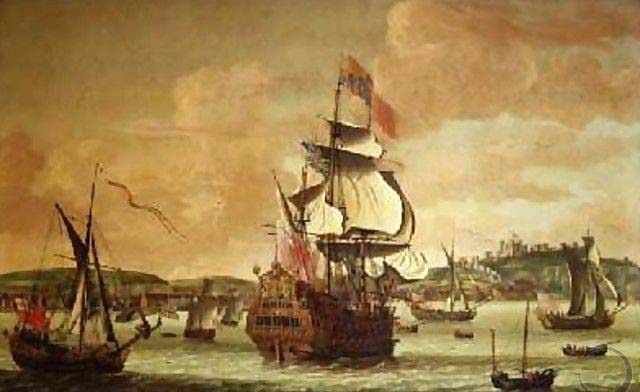
Charles II on board a two decker man o war off Dover
Charles agreed to give up feudal dues that had been revived by his father; in return, the English Parliament granted him an annual income to run the government of £1.2 million, generated largely from customs and excise duties. The grant, however, proved to be insufficient for most of Charles's reign. The sum was only an indication of the maximum the King was allowed to withdraw from the Treasury each year; for the most part, the actual revenue was much lower, which led to mounting debts, and further attempts to raise money through poll taxes, land taxes and hearth taxes.
Early Reign
In the latter half of 1660, Charles' joy at the Restoration was tempered by the deaths of his youngest brother, Henry, and sister, Mary, of smallpox. At around the same time, Anne Hyde, the daughter of the Lord Chancellor Edward Hyde, revealed that she was pregnant by Charles's brother, James, whom she had secretly married. Edward Hyde, who had not known of either the marriage or the pregnancy, was created Earl of Clarendon and his position as Charles's favorite minister was strengthened.
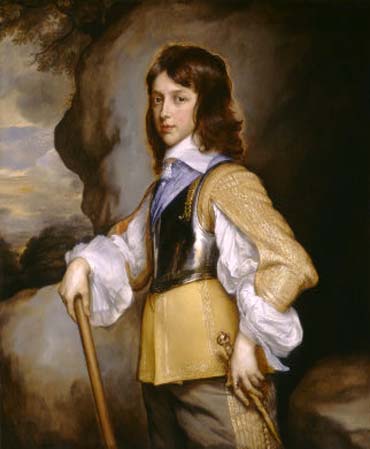
Henry, Duke of Gloucester
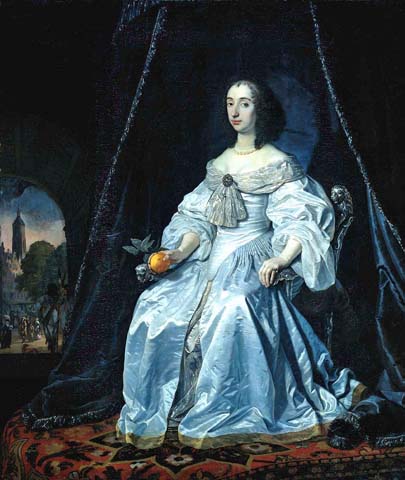
Mary Princess of Orange

Anne Hyde, Duchess of York
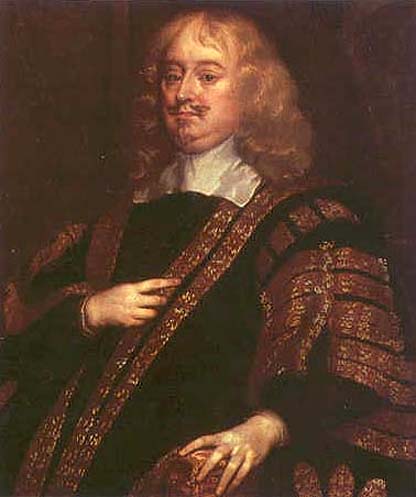
Edward Hyde, 1st Earl of Clarendon"
The Convention Parliament was dissolved in December 1660, and Charles's coronation took place at Westminster Abbey on April 23, 1661. Charles was the last sovereign to make the traditional procession from the Tower of London to Westminster Abbey the day before the coronation. Shortly after the coronation, the second English Parliament of the reign assembled. Dubbed the Cavalier Parliament, it was overwhelmingly Royalist and Anglican. It sought to discourage non-conformity to the Church of England, and passed several acts to secure Anglican dominance. The Corporation Act 1661 required municipal officeholders to swear allegiance; the Act of Uniformity 1662 made the use of the Anglican Book of Common Prayer compulsory; the Conventicle Act 1664 prohibited religious assemblies of more than five people, except under the auspices of the Church of England; and the Five Mile Act 1665 prohibited clergymen from coming within five miles of a parish from which they had been banished. The Conventicle and Five Mile Acts remained in effect for the remainder of Charles's reign. The Acts became known as the "Clarendon Code", after Lord Clarendon, even though he was not directly responsible for them and even spoke against the Five Mile Act.
The Restoration was accompanied by social change. Puritanism lost its momentum. Theaters reopened after having been closed during the Protectorship of Oliver Cromwell, and bawdy "Restoration Comedy" became a recognizable genre. Theater licenses granted by Charles were the first in England to permit women to play female roles on stage (they were previously played by boys), and Restoration literature celebrated or reacted to the restored court, which included libertines like John Wilmot, 2nd Earl of Rochester. Of Charles II, Wilmot supposedly said:
We have a pretty witty king,
And whose word no man relies on,
He never said a foolish thing,
And never did a wise one"
To which Charles supposedly said "that's true, for my words are my own, but my actions are those of my ministers".
John Wilmot, 2nd Earl of Rochester
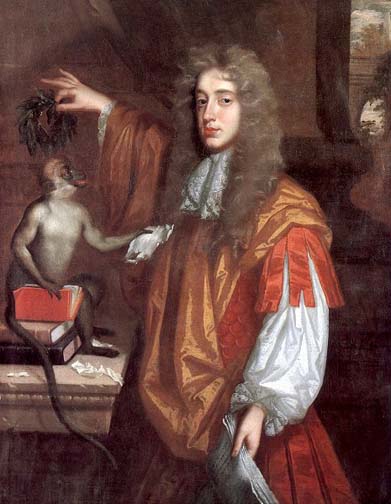
A man whom the muses were fond to inspire, but ashamed to avow.
--Horace Walpole
Nay so confirm'd was he in Sin, that he lived, and oftentimes almost died, a Martyr for it.
--Robert Parsons, A Sermon preached at the Earl of Rochester's Funeral, 1680
A God-haunted atheist, pornographer and panegyrist of "that lost thing (Love)," misogynist and protofeminist...
--Warren Chernaik, Sexual Freedom in Restoration Literature, 1995
From: John Wilmot, Second Earl of Rochester John Wilmot, Second Earl of Rochester
The Great Plague and Fire of London
In 1665, Charles was faced with a great health crisis: the Great Plague of London. The death toll at one point reached a peak of 7,000 in the week of September 17th. Charles, along with his family and court, fled London in July to Salisbury; Parliament met in Oxford. Various attempts at containing the disease by London public health officials all fell in vain and the disease continued to spread rapidly.
Adding to London's woes, but marking the end of the plague, was what later became known as the Great Fire of London, which started on September 2, 1666. The fire consumed about 13,200 houses and 87 churches, including Saint Paul's Cathedral. Charles, and his brother James, joined and directed the fire-fighting effort. The public blamed Roman Catholic conspirators for the fire, although it had actually started in a bakehouse in Pudding Lane.
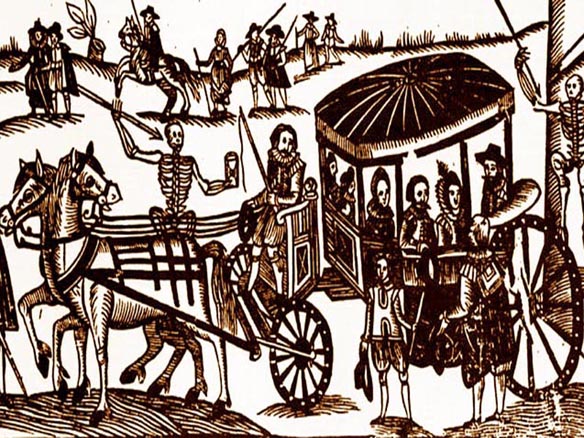
Great Plague of London

Great Fire of London
Foreign and Colonial Policy
Since 1640, Portugal had been fighting a war against Spain to restore its independence after a dynastic union of 60 years between the crowns of Spain and Portugal. Portugal had been helped by France, but in the Treaty of the Pyrenees in 1659 Portugal was abandoned by its French ally. Upon Charles's restoration, Queen Luísa of Portugal, acting as regent, opened negotiations with England that resulted in an alliance. On June 23, 1661, a marriage treaty was signed, and in May 1662, Charles married Catherine of Braganza in the parish of Saint Thomas à Becket, Portsmouth. Catherine's dowry brought the territories of Tangier and Bombay to British control. The latter had a major influence on the development of the British Empire in India. In an unpopular move the same year, Charles sold Dunkirk to his first cousin King Louis XIV of France for about £375,000. The channel port, although a valuable strategic outpost, was a drain on Charles's limited finances.
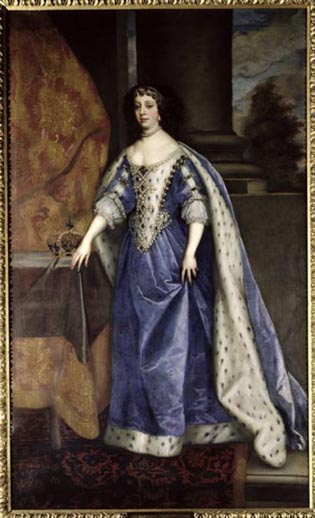
Catherine of Braganza by Sir Peter Lely
Before Charles' restoration, the Navigation Acts of 1650 had hurt Dutch trade by giving English vessels a monopoly, and had started the First Dutch War (1652-1654). To lay foundations for a new beginning, envoys of the States-General appeared in November 1660 with the Dutch Gift. The Second Dutch War (1665-1667) was started by English attempts to muscle in on Dutch possessions in Africa and North America. The conflict began well for the English, with the capture of New Amsterdam (renamed New York in honor of Charles's brother James, Duke of York) and a victory at the Battle of Lowestoft, but in 1667 the Dutch launched a surprise attack on the English (the Raid on the Medway) when they sailed up the River Thames to where a major part of the English fleet was docked. Almost all of the ships were sunk except for the flagship, the Royal Charles, which was taken back to the Netherlands as a trophy. The Second Dutch War ended with the signing of the Treaty of Breda (1667).
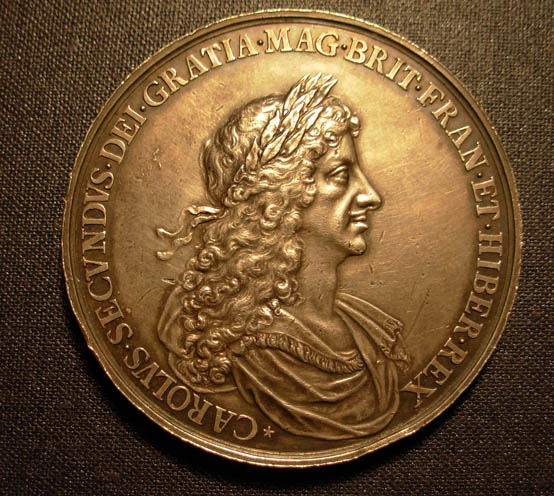
Charles II in profile on a medal struck in 1667 by John Roettier to commemorate the Second Dutch War
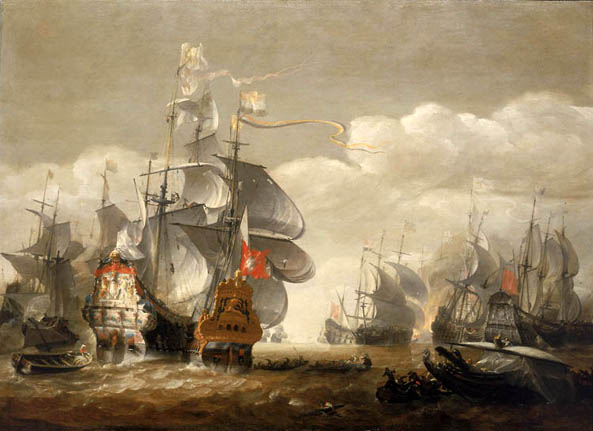
Battle of Lowestoft
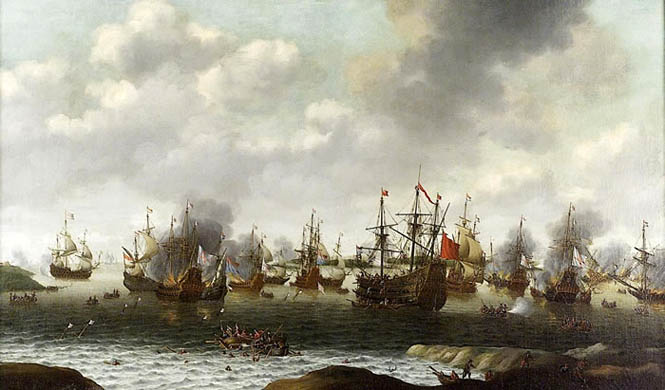
Attack on the Medway
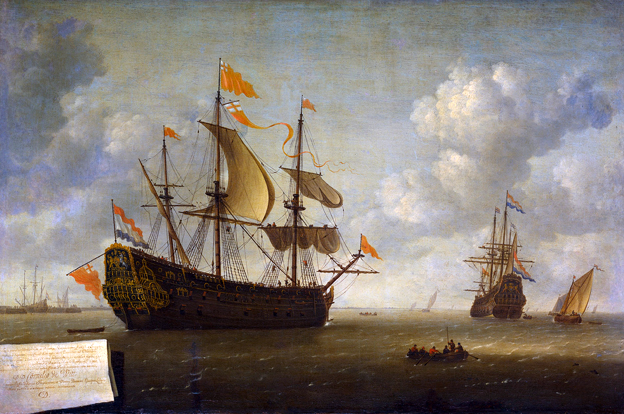
HMS Royal Charles
As a result of the Second Dutch War, Charles dismissed Lord Clarendon, whom he used as a scapegoat for the war. Clarendon fled to France when impeached for high treason (which carried the penalty of death). Power passed to five politicians known collectively by a whimsical acronym as the Cabal - Clifford, Arlington, Buckingham, Ashley (afterwards Earl of Shaftesbury) and Lauderdale. In fact, the Cabal rarely acted in concert, and the court was often divided between two factions led by Arlington and Buckingham, with Arlington the more successful.
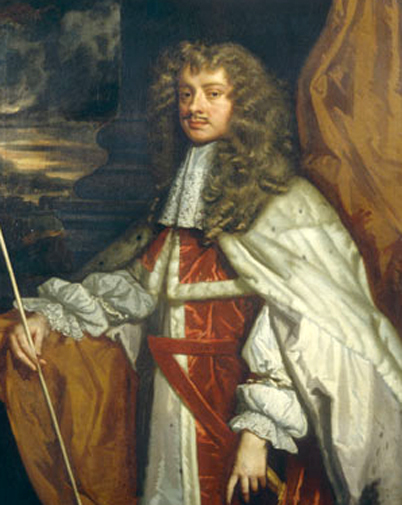
1st Lord Clifford
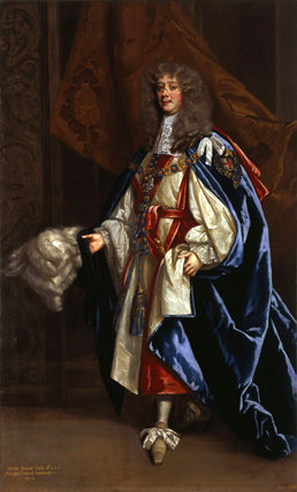
Henry Bennet, 1st Earl of Arlington
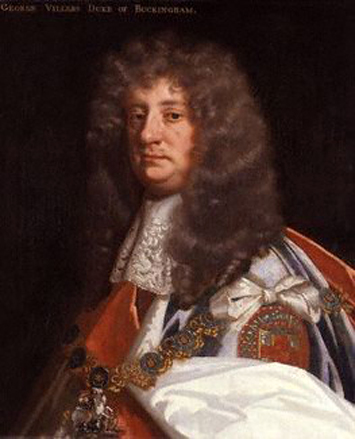
2nd Duke of Buckingham
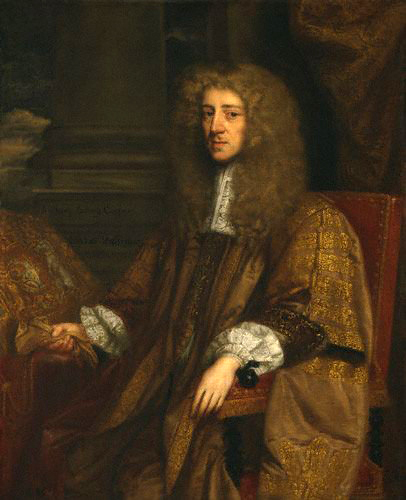
Anthony Ashley-Cooper, 1st Earl of Shaftesbury
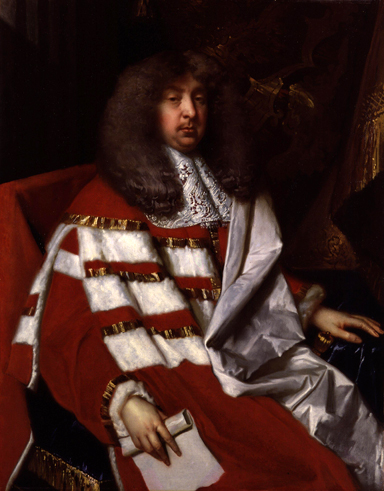
John Maitland, Duke of Lauderdale
In 1668, England allied itself with Sweden, and with its former enemy the Netherlands, in order to oppose Louis XIV in the War of Devolution. Louis made peace with the Triple Alliance, but he continued to maintain his aggressive intentions towards the Netherlands. In 1670, Charles, seeking to solve his financial troubles, agreed to the Treaty of Dover, under which Louis XIV would pay him £160,000 each year. In exchange, Charles agreed to supply Louis with troops and to announce his conversion to Roman Catholicism "as soon as the welfare of his kingdom will permit". Louis was to provide him with 6,000 troops to suppress those who opposed the conversion. Charles endeavored to ensure that the Treaty - especially the conversion clause - remained secret. It remains unclear if Charles ever seriously intended to convert.
Meanwhile, by a series of five charters, Charles granted the British East India Company the rights to autonomous territorial acquisitions, to mint money, to command fortresses and troops, to form alliances, to make war and peace, and to exercise both civil and criminal jurisdiction over the acquired areas in India. Earlier in 1668 he leased the islands of Bombay for a nominal sum of £10 paid in gold. The Portuguese territories that Catherine brought with her as dowry had proved too expensive to maintain; Tangier was abandoned.
In 1670, Charles granted control of the entire Hudson Bay drainage basin to the Hudson's Bay Company by royal charter, and named the territory Rupert's Land, after his cousin Prince Rupert of the Rhine, the company's first Governor.
Conflict with Parliament
Although previously favorable to the Crown, the Cavalier Parliament was alienated by the king's wars and religious policies during the 1670's. In 1672, Charles issued the Royal Declaration of Indulgence, in which he purported to suspend all penal laws against Roman Catholics and other religious dissenters. In the same year, he openly supported Catholic France and started the Third Anglo-Dutch War.
The Cavalier Parliament opposed the Declaration of Indulgence on constitutional grounds by claiming that the King had no right to arbitrarily suspend laws passed by Parliament. Charles withdrew the Declaration, and also agreed to the Test Act, which not only required public officials to receive the sacrament under the forms prescribed by the Church of England, but also later forced them to denounce certain teachings of the Roman Catholic Church as "superstitious and idolatrous". Clifford, who had converted to Catholicism, resigned rather than take the oath, and died shortly after. By 1674 England had gained nothing from the Anglo-Dutch War, and the Cavalier Parliament refused to provide further funds, forcing Charles to make peace. The power of the Cabal waned and that of Clifford's replacement, Lord Danby, grew.
Charles's wife Queen Catherine was unable to produce an heir; her four pregnancies had ended in miscarriages and stillbirths in 1662, February 1666, May 1668 and June 1669. Charles's heir presumptive was therefore his unpopular Roman Catholic brother, James, Duke of York. Partly in order to assuage public fears that the royal family was too Catholic, Charles agreed that James's daughter, Mary, should marry the Protestant William of Orange. In 1678, Titus Oates, who had been alternately an Anglican and Jesuit priest, falsely warned of a "Popish Plot" to assassinate the King, even accusing the Queen of complicity. Charles did not believe the allegations, but ordered his chief minister Lord Danby to investigate. While Lord Danby seems to have been rightly skeptical about Oates's claims, the Cavalier Parliament took them seriously. The people were seized with an anti-Catholic hysteria; judges and juries across the land condemned the supposed conspirators; numerous innocent individuals were executed.

Thomas Osborne, who became 1st Viscount Osborne (1673),
1st Viscount Latimer (1673), 1st Earl of Danby (1674),
1st Marquess of Carmarthen (1689) and 1st Duke of Leeds (1694).
.jpg)
James Stuart, Duke of York
(later James II, King of England)
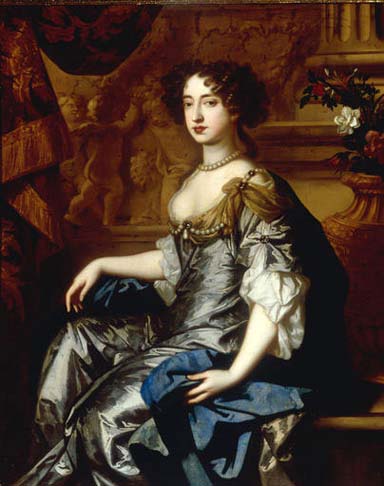
Queen Mary II, Daughter of James II
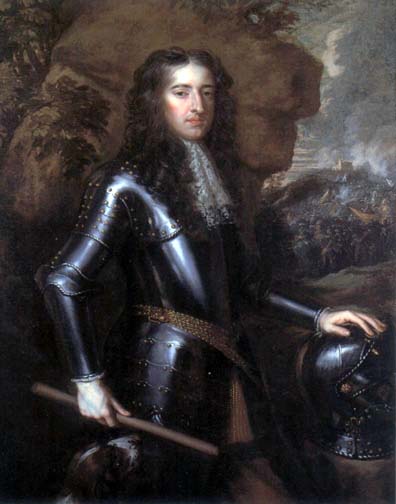
William III of England
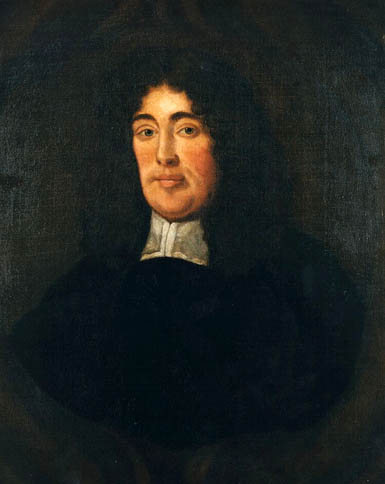
Titus Oates
Later in 1678, Lord Danby was impeached by the House of Commons on the charge of high treason. Although much of the nation had sought war with Catholic France, Charles had secretly negotiated with Louis XIV, trying to reach an agreement under which England would remain neutral in return for money. Lord Danby had publicly professed that he was hostile to France, but had reservedly agreed to abide by Charles's wishes. Unfortunately for him, the House of Commons failed to view him as a reluctant participant in the scandal, instead believing that he was the author of the policy. To save Lord Danby from the impeachment trial, Charles dissolved the Cavalier Parliament in January 1679.
The new English Parliament, which met in March of the same year, was quite hostile to Charles. Having lost the support of Parliament, Lord Danby resigned his post of Lord High Treasurer, but received a pardon from the King. In defiance of the royal will, the House of Commons declared that the dissolution of Parliament did not interrupt impeachment proceedings, and that the pardon was therefore invalid. When the House of Lords attempted to impose the punishment of exile - which the Commons thought too mild - the impeachment became stalled between the two Houses. As he had been required to do so many times during his reign, Charles bowed to the wishes of his opponents, committing Lord Danby to the Tower of London. Lord Danby would be held there for another five years.
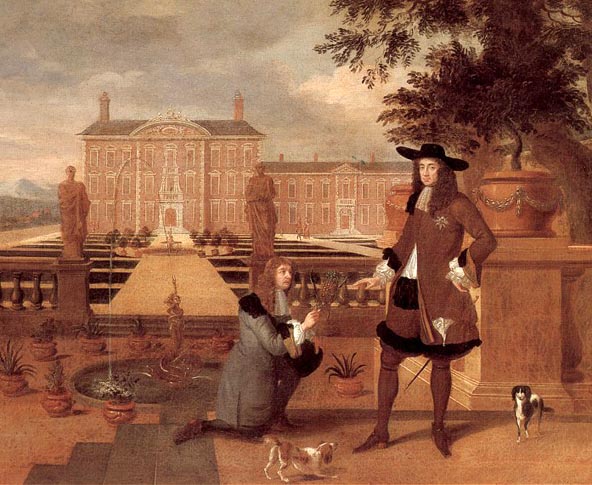
Charles was presented with the first pineapple grown in England in 1675.
Later Years
Charles faced a political storm over the Succession to the Throne. The prospect of a Catholic monarch was vehemently opposed by Anthony Ashley Cooper, 1st Earl of Shaftesbury (previously Baron Ashley and a member of the Cabal, which had fallen apart in 1673). Shaftesbury's power base was strengthened when the House of Commons of 1679 introduced the Exclusion Bill, which sought to exclude the Duke of York from the line of succession. Some even sought to confer the Crown to the Protestant Duke of Monmouth, the eldest of Charles's illegitimate children. The Abhorrers - those who thought the Exclusion Bill was abhorrent - were named Tories (after a term for dispossessed Irish Catholic bandits), while The Petitioners - those who supported a petitioning campaign in favor of the Exclusion Bill - became called Whigs (after a term for rebellious Scottish Presbyterians).
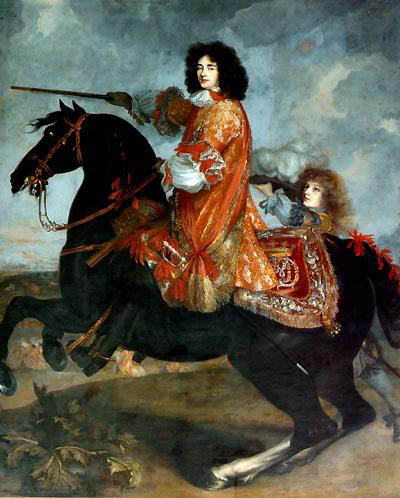
James Scott, 1st Duke of Monmouth
Fearing that the Exclusion Bill would be passed, and bolstered by some acquittals in the continuing Plot trials, which seemed to him to indicate a more favorable public mood towards Catholicism, Charles dissolved the English Parliament, for a second time that year, in the summer of 1679. Charles's hopes for a more moderate Parliament were not fulfilled, within a few months he had dissolved Parliament yet again, after it sought to pass the Exclusion Bill. When a new Parliament assembled at Oxford in March 1681, Charles dissolved it for a fourth time after just a few days. During the 1680's, however, popular support for the Exclusion Bill ebbed, and Charles experienced a nationwide surge of loyalty, for many of his subjects felt that Parliament had been too assertive. Lord Shaftesbury was charged with treason and fled to Holland, where he died. For the remainder of his reign, Charles ruled without Parliament.
Charles's opposition to the Exclusion Bill angered some Protestants. Protestant conspirators formulated the Rye House Plot, a plan to murder the King and the Duke of York as they returned to London after horse races in Newmarket. A great fire, however, destroyed Charles's lodgings at Newmarket, which forced him to leave the races early thus, inadvertently, avoiding the planned attack. News of the failed plot was leaked. Protestant politicians such as Arthur Capell, 1st Earl of Essex, Algernon Sydney, Lord William Russell and the Duke of Monmouth were implicated in the plot. Lord Essex slit his own throat while imprisoned in the Tower of London; Sydney and Russell were executed for high treason on very flimsy evidence; and the Duke of Monmouth went into exile at the court of William of Orange. Lord Danby and the surviving Catholic lords held in the Tower were released and the King's Catholic brother, James, acquired greater influence at court. Titus Oates was convicted and imprisoned for defamation.
Charles suffered a sudden apoplectic fit on the morning of February 2, 1685, and died aged 54 at 11:45 a.m. four days later at Whitehall Palace. The symptoms of his final illness are similar to those of uremia (a clinical syndrome due to kidney dysfunction). On his deathbed Charles asked his brother, James, to look after his mistresses: "be well to Portsmouth, and let not poor Nelly starve", and told his courtiers: "I am sorry, gentlemen, for being such a time a-dying." On the last evening of his life he was received into the Roman Catholic Church, though the extent to which he was fully conscious or committed, and with whom the idea originated, is unclear. He was buried in Westminster Abbey "without any manner of pomp" on February 14th and was succeeded by his brother who became James II of England and Ireland and James VII of Scotland.
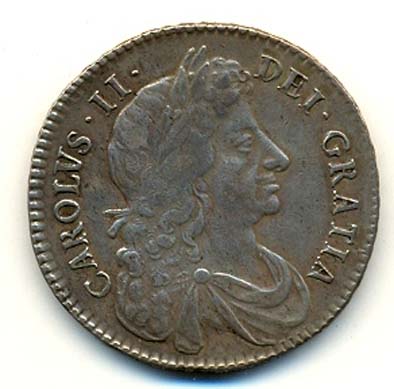
Half crown of Charles II, 1683. The inscription reads CAROLUS II DEI GRATIA
(Charles II by the Grace of God).
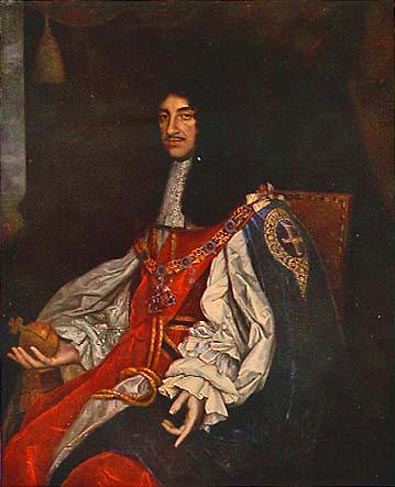
Charles II by John Michael Wright
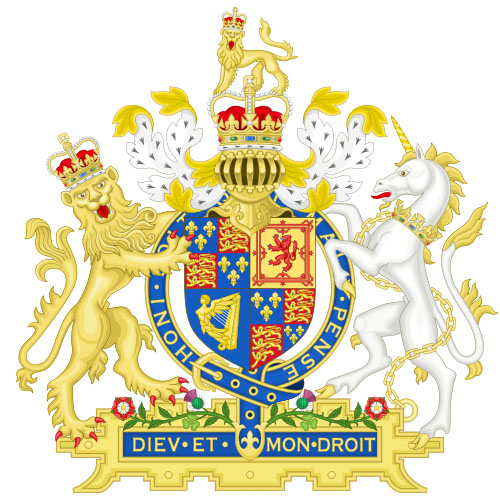
Coat of Arms of Charles II: 1660-1689
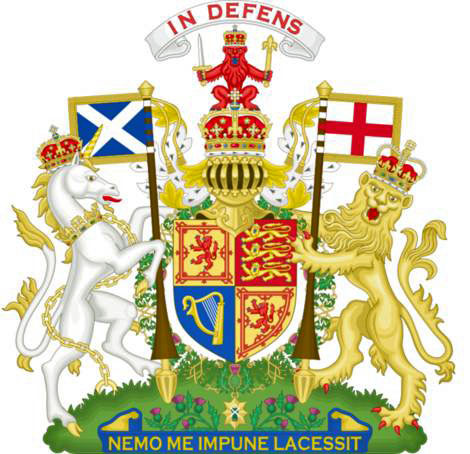
Royal Coat of Arms of the Scotland
Posterity and Legacy
Charles had no legitimate children, but acknowledged a dozen by seven mistresses, including five by the notorious Barbara Villiers, Lady Castlemaine, for whom the Dukedom of Cleveland was created. His other mistresses included Moll Davis, Nell Gwyn, Elizabeth Killigrew, Catherine Pegge, Lucy Walter, and Louise de Kérouaille, Duchess of Portsmouth. The public resented paying taxes that were spent on them and their children, many of whom received dukedoms or earldoms. The present Dukes of Buccleuch, Richmond, Grafton and St Albans descend from Charles in direct male line. Diana, Princess of Wales, was descended from two of Charles's illegitimate sons: the Dukes of Grafton and Richmond. Diana's son, Prince William, Duke of Cambridge, second in line to the British Throne, is likely to be the first monarch descended from Charles II.
,_Duchess_of_Cleveland_by_John_Michael_Wright.jpg)
Barbara Palmer (nee Villiers),
Duchess of Cleveland by John Michael Wright
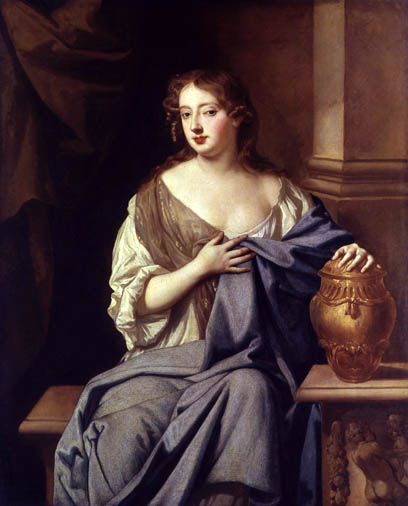
Mary Davis by Sir Peter Lely

Nell Gwyn by Peter Lely: ca 1675
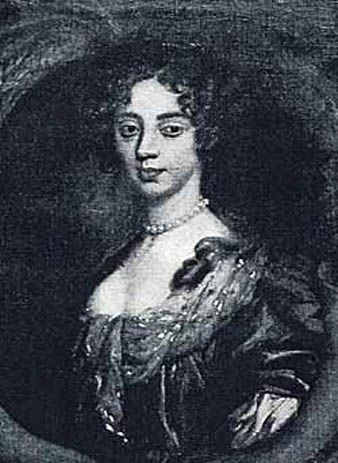
Lucy Walter
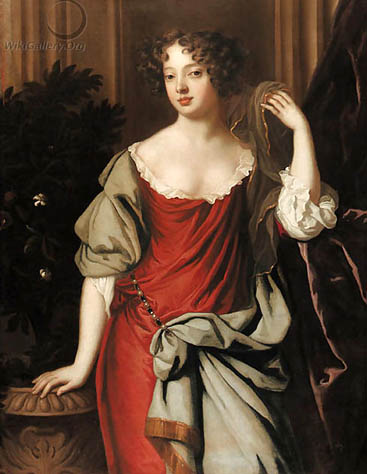
Portrait of Louise de Kerouaille, Duchess of Portsmouth
Charles's eldest son, the Duke of Monmouth, led a rebellion against James II, but was defeated at the Battle of Sedgemoor on July 6, 1685, captured and executed. James was eventually dethroned in 1688, in the course of the Glorious Revolution. He was the last Catholic monarch to rule Britain.
Looking back on Charles's reign, Tories tended to view it as a time of benevolent monarchy whereas Whigs perceived it as a terrible despotism. Today it is possible to assess Charles without the taint of partisanship, and he is seen as more of a lovable rogue - in the words of his contemporary John Evelyn: "a prince of many virtues and many great imperfections, debonair, ease of access, not bloody or cruel". John Wilmot, 2nd Earl of Rochester, wrote more lewdly of Charles:
Restless he rolls from whore to whore
A merry monarch, scandalous and poor.

John Evelyn: 1687
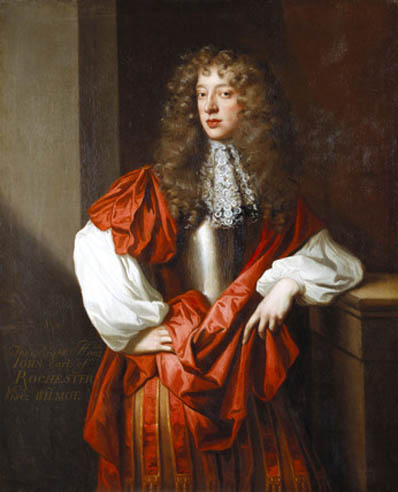
John Wilmot, 2nd Earl of Rochester
Charles, a patron of the arts and sciences, founded the Royal Observatory and supported the Royal Society, a scientific group whose early members included Robert Hooke, Robert Boyle and Sir Isaac Newton. Charles was the personal patron of Sir Christopher Wren, the architect who helped rebuild London after the Great Fire and who constructed the Royal Hospital Chelsea, which Charles founded as a home for retired soldiers in 1682.

Robert Hooke
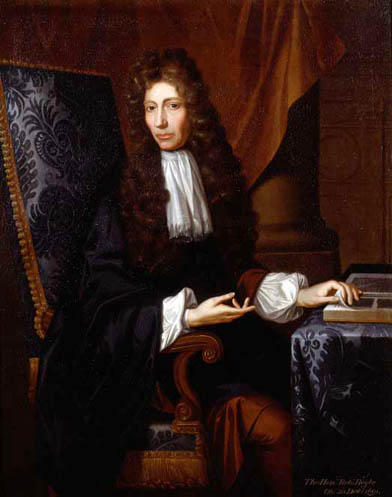
Robert Boyle
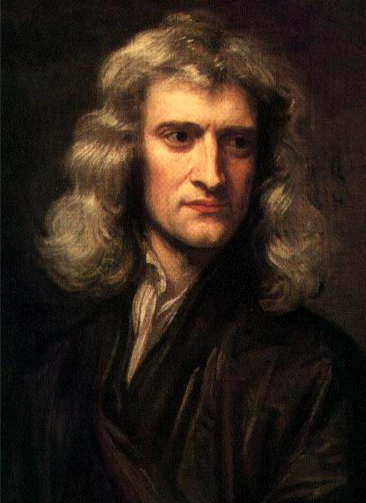
Isaac Newton: 1689
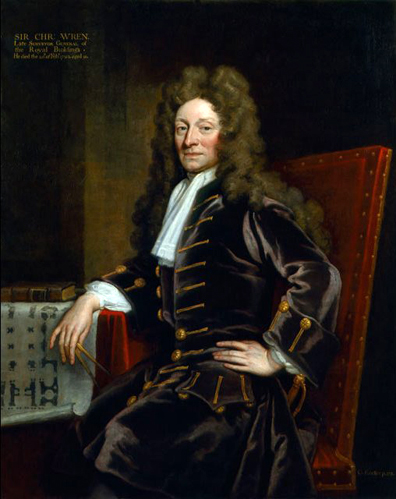
Christopher Wren by Godfrey Kneller: 1711
The anniversary of the Restoration (which was also Charles' birthday) - May 29th - was recognized in England until the mid-nineteenth century as Oak Apple Day, after the Royal Oak in which Charles hid during his escape from the forces of Oliver Cromwell. Traditional celebrations involved the wearing of oak leaves but these have now died out. Charles II is commemorated by statues in London's Soho Square, in Edinburgh and near the south portal of Lichfield Cathedral, and is depicted extensively in literature and other media.
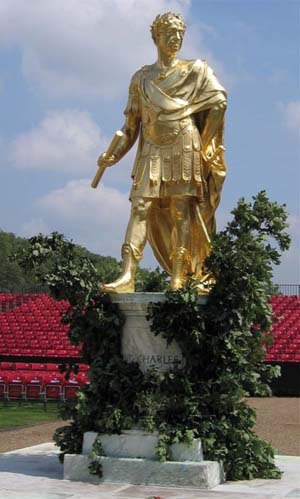
A 1676 statue of Charles II in Ancient Roman dress by Grinling Gibbons
has stood in the Figure Court of the Royal Hospital Chelsea since 1692
Quoted From: Charles II of England
Additional Resources:
Luminarium Encyclopedia: King Charles II of England (1630-1685)
English Monarchs - Kings and Queens of England - Charles II
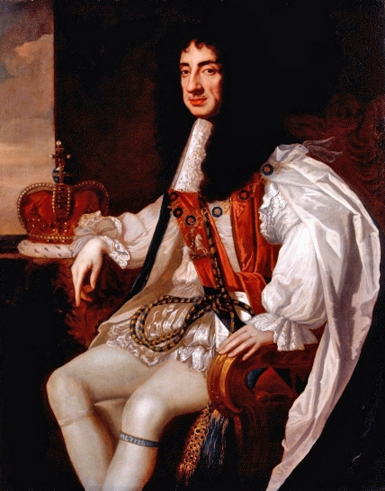
Charles II
Charles II can intrigue people for various and quite different reasons. The reaction to Radical Puritanism, though understandable, probably foreshadowed the extremes of Victorian Society. Charles II's Court was amoral as well as hypocritical especially in its pro-catholic position which was more political than religious. The Stuarts never truly appreciated the importance of governing through Parliament with a supportive royal party. The Tudors were at least appreciative of this attitude among the Commons. Stuart arrogance helped to fuel the fires of the Glorious Revolution for no one wanted to see a return to the anarchy of the inter regnum.
My Opinion!
Senex Magister
Return to Persona Historiae
Return to Pagina Artis
Return to Bruce and Bobbie's Main Page.